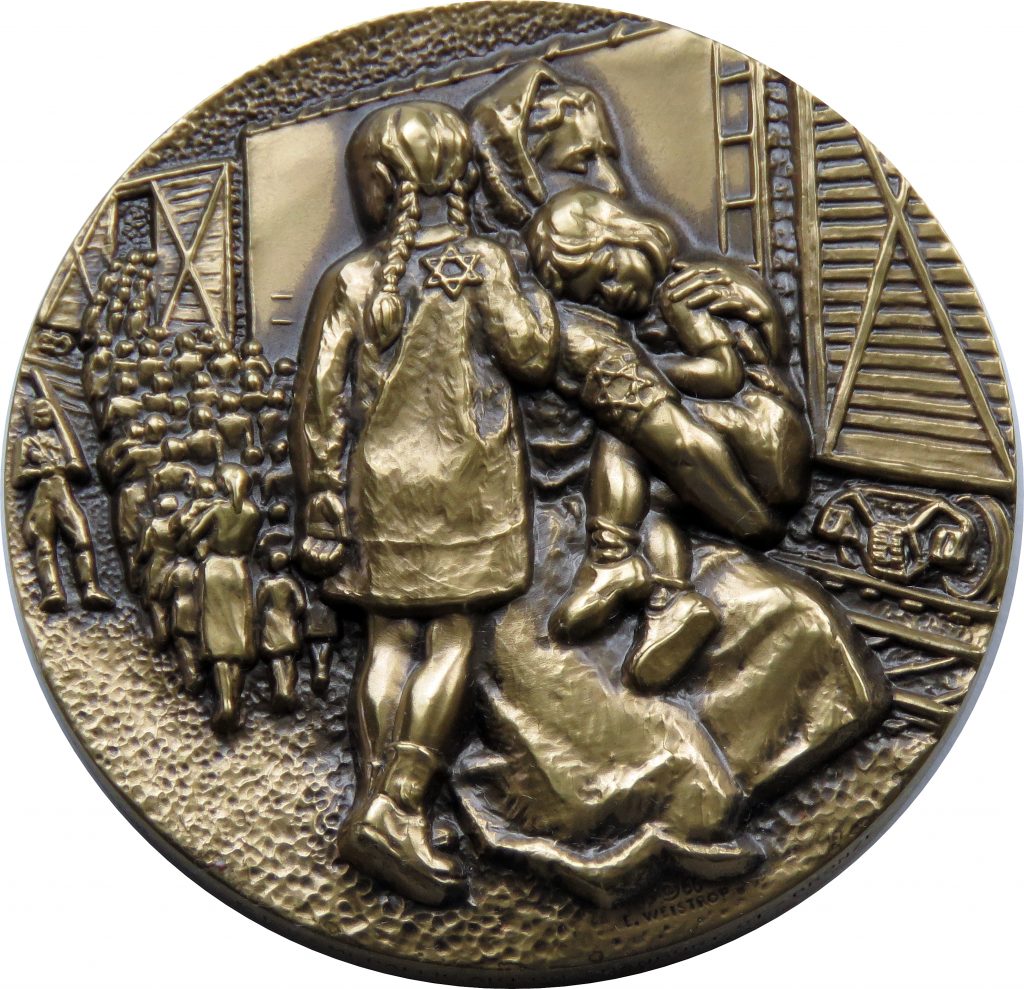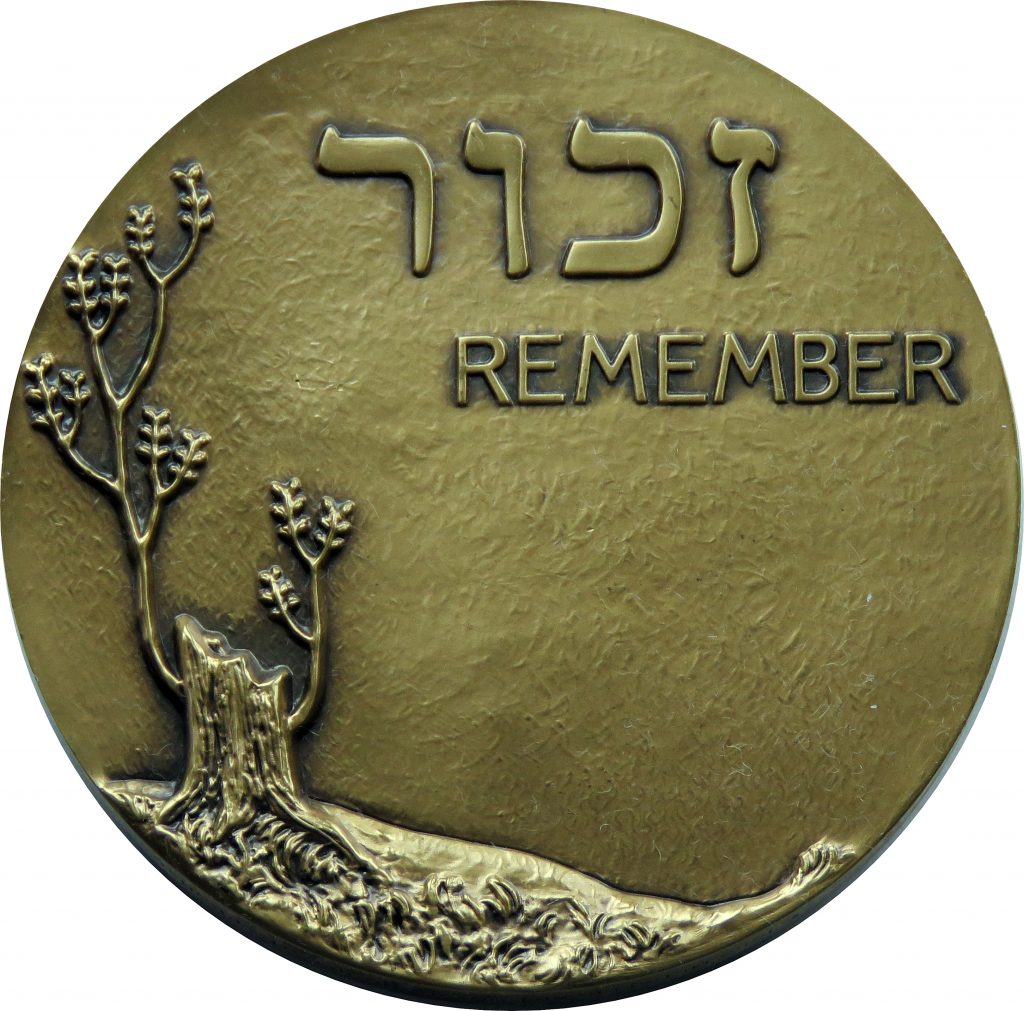The Frankenhuis Collection Medal
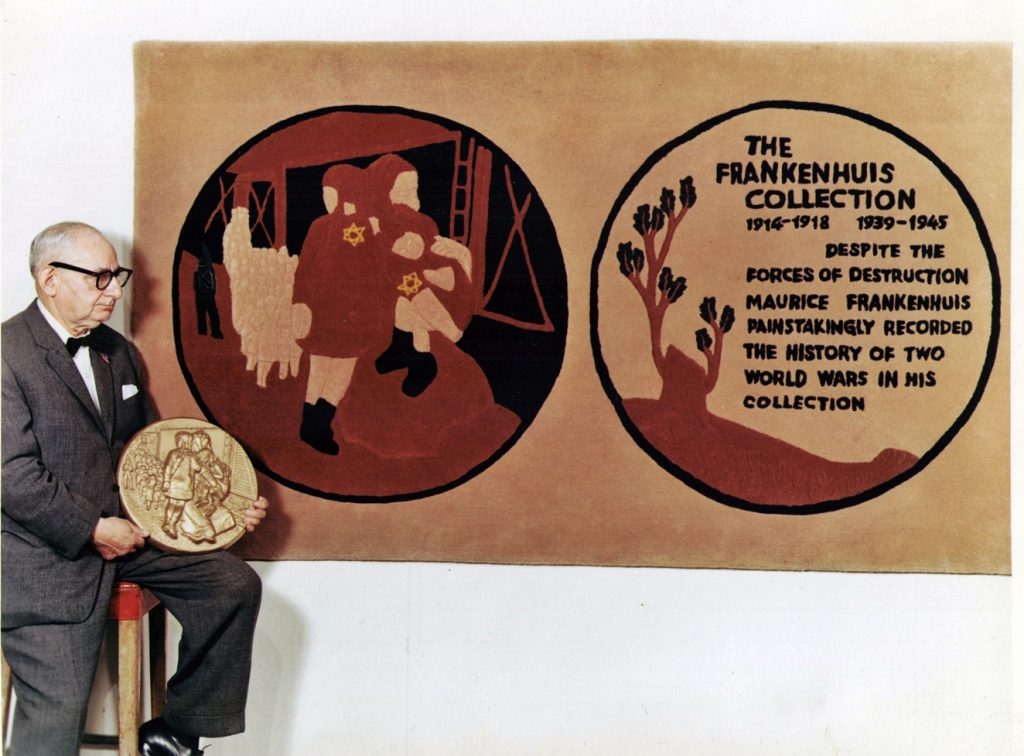
of his medal ‘A Tribute to the Six Million’
A Tribute to the Six Million
On March 10, 1967, the Frankenhuis Collection issued a commemorative
art medal, conceived as a tribute to the 6 million Jewish heroes and martyrs who were murdered by the Nazis during the holocaust of 1939-1945. The medal was designed by the distinguished American sculptor, Elizabeth Nealon Weistrop, and reproduced in bronze by the Medallic Art Co. of New York.
From the insert accompanying the original medal:
The Frankenhuis Commemorative Art Medal has been carved out of human sorrow. It gives physical form to the image that can never be eradicated from man’s consciousness. From the vast kaleidoscope of scenes of degradation and torture perpetrated by the Nazis, Mr. Frankenhuis commissioned the artist to abstract this episode to symbolize all others: It depicts the moment of greatest anguish when the victim is still psychologically intact but otherwise defenseless. Torn from the life he knew and loved and to which he belonged, mortified and debased by the German monsters, he questions, “ Why do they drive us forth like criminals, why are we the targets of their guns?”
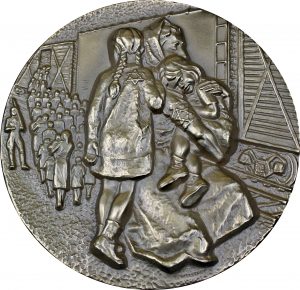
depicts scene of deportation in the Holocaust
The medal (obverse) portrays a Mother and two children halting under police guard on a railroad station before being herded onto the cattlecar that will transport them to a strange and cruel fate. This stark moment of tragic abandonment has been termed “an agony of death.” There is no greater poignancy than the mother’s torment as her arms clasp her babes in a protective embrace against the surrounding terror. Sewn to their garments is the “Star of David,” which every Jew was forced to wear and which, as one critic observed, “to the consternation of the German occupiers, was saluted by the Dutch population as if it were a badge of honour.” Countless men, women and children had stood thus on the familiar platform of their home-town depot, seeing it for the last time. Alas, they are not here to remember. But Maurice Frankenhuis remembers for them and has commissioned this medal for remembering. He can see in the artist’s rendition the actual figures of his wife and their own two little daughters; he can feel the pathos of their exile as they were trapped by man’s inexorable inhumanity.
“The wheels churn a question in your ears. Why?
Don’t you know of your eternal plight…
Because you are Jews – you are Jews, That’s why.”
“They can kill us – but never
Shall we be destroyed –
Because we are Jews!”
(Lines from a poem by Lore Pintus, “Departure from Amsterdam” trans. From German)
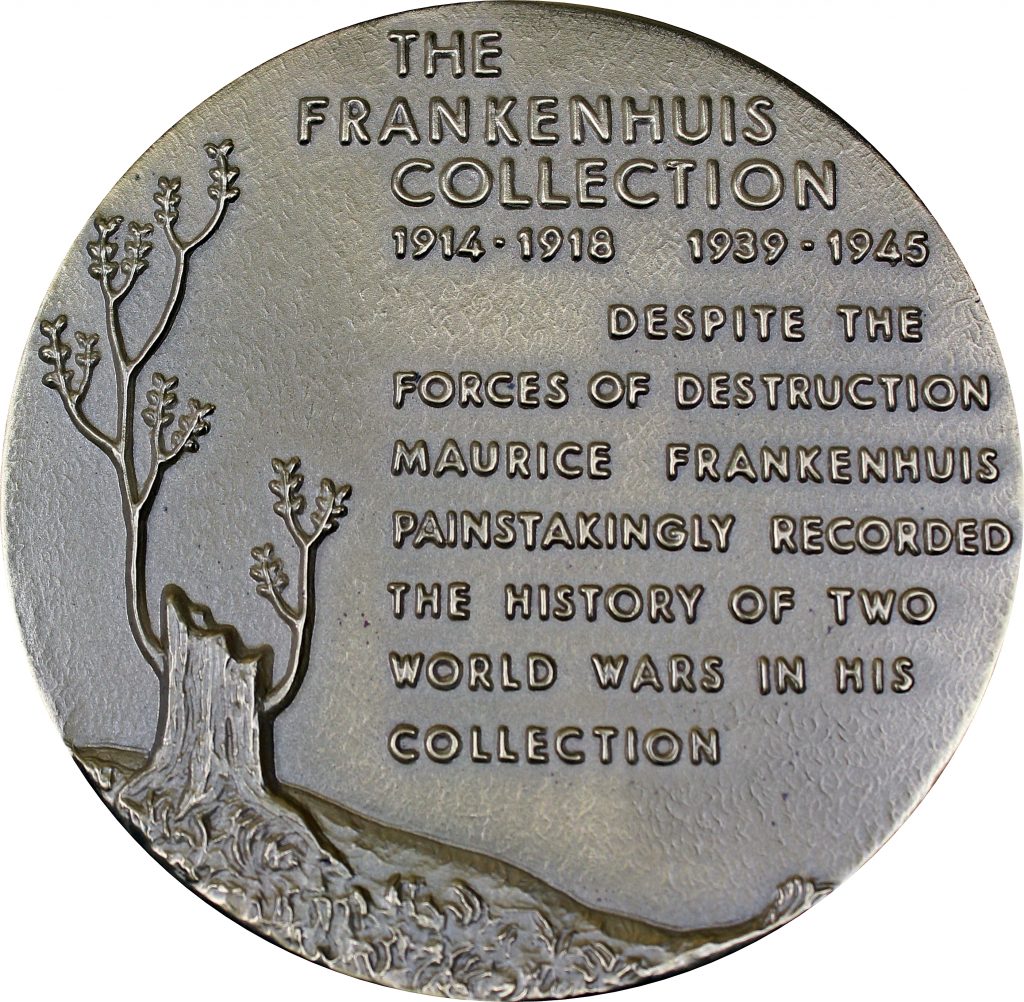
“Despite the Forces of Destruction” are the opening words of the inscription on the Frankenhuis Collection medal (reverse). It is illustrated by a massive stump of the Tree of Life. Though its trunk is savagely mutilated, the tree’s vitality is revealed in the new branches which reach upward like arms hailing the promise of a new growth.
In the opinion of leading numismatists, there is a need for such a commemorative work of art to serve as a permanent reminder of one of the most infamous chapters in the history of civilization. The theme here finds a moving and aesthetic form of expression which reflects the compassion of the medalist and the genius of the artist.
The medal (obverse) poignantly depicts the plight of a mother and two small children about to be deported to a concentration camp aboard a cattle-car transport which awaits them in the background. On the reverse an inscription commends the achievement of the “Frankenhuis Collection” which not only survived the “forces of destruction”, but came through the peril with an enriched store of sociological and historical materials for the enlightenment of mankind.
Mr. Maurice Frankenhuis had the privilege of presenting the medal to
individual heroes in the Netherlands, Poland and elsewhere who are officially on record as having risked their lives to rescue Jews during the German occupation. Others who acquired the medal are numismatists, collectors of Judaica, directors of museums, etc., notably in Israel, France, the Netherlands and the United States, whose interests are identified with the theme of the medal. The medal struck in high-relief bronze, 3 inches in diameter, was available to the public through leading coin and medal dealers, and sold out within days.

Due to collector demand, a re-strike of the medal was produced in conjunction with the Gathering of Holocaust Survivors in Washington D.C. in 1983. The reverse was modified to include the Hebrew word ‘Zachor’ and English ‘REMEMBER’ with space to accommodate the optional engraving of family members who perished, for blessed eternal memory. The restrike was made from the original dies in the same size in bronze but with antique finish.
